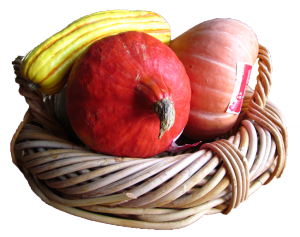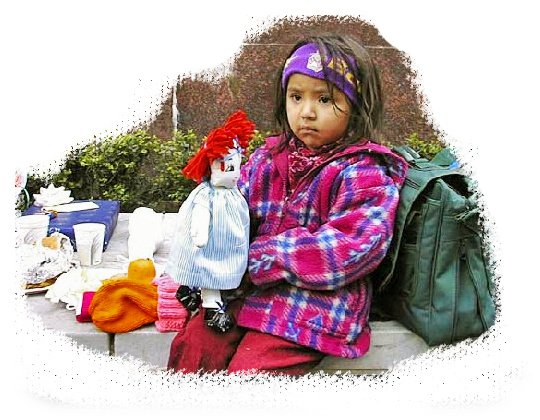
Eat Real Food Campaign
The Campaign History
In November of 2006 MPC instituted a campaign of nutritional awareness and food safety called the “Eat Real Food Campaign.”
Language was created that encouraged providers, donors, food distributors, and City Government to not only support safe nutritional food ingredients, but to actively promote these types of foods for food insecure and compromised populations.
The campaign was launched with the understanding that this would be a long term effort. Change takes time, and we are patient. MPC will continue to provide education, resources, and product support, encouraging providers to serve wholesome, nutritionally dense foods, with safe, non toxic ingredients. We will continue to encourage donors and food distributors to contribute foods that are healthful, safe, and non-toxic.
The Campaign Focus
You are what you eat. Organic, local, sustainable foods are in the spotlight right now. Food guru and author Michael Pollan wrote in one of his bestselling books to “eat food”. The USDA is revamping school lunch requirements, now focusing on providing healthy choices instead of using our children as a way to dispose of our agricultural commodities.
Former Seattle City Council Member, Richard Conlin wrote the local food initiative which was adopted by the city council in April 2008. One goal is to “Improve public health by providing increased access to healthy, culturally appropriate, and locally and regionally grown foods, especially for low income households”. Our local public health agencies have banned trans-fats, require menu labeling, and are partnering with community groups to support healthy eating and active living.
2017 USDA statistics on food insecurity:
Food insecure—At times during the year, these households were uncertain of having, or unable to acquire, enough food to meet the needs of all their members because they had insufficient money or other resources for food. Food-insecure households include those with low food security and very low food security.
Low food security—These food-insecure households obtained enough food to avoid substantially disrupting their eating patterns or reducing food intake by using a variety of coping strategies, such as eating less varied diets, participating in Federal food assistance programs, or getting emergency food from community food pantries.
Very low food security—In these food-insecure households, normal eating patterns of one or more household members were disrupted and food intake was reduced at times during the year because they had insufficient money or other resources for food.
- 9.7 million adults lived in households with very low food security.
- Very low food security—In these food-insecure households, normal eating patterns of one or more household members were disrupted and food intake was reduced at times during the year because they had insufficient money or other resources for food6.5 million children lived in food-insecure households in which children, along with adults, were food insecure.
- 540,000 children (0.7 percent of the Nation’s children) lived in households in which one or more child experienced very low food security.
How Many People Lived in Food-Insecure Households?
In 2017:
- 40.0 million people lived in food-insecure households.
- 9.7 million adults lived in households with very low food security.
- 6.5 million children lived in food-insecure households in which children, along with adults, were food insecure.
- 540,000 children (0.7 percent of the Nation’s children) lived in households in which one or more child experienced very low food security.
Food Insecurity by Household Characteristics
The prevalence of food insecurity varied considerably among household types. Rates of food insecurity were higher than the national average (11.8 percent) for the following groups:
- All households with children (15.7 percent),
- Households with children under age 6 (16.4 percent),
- Households with children headed by a single woman (30.3 percent),
- Households with children headed by a single man (19.7 percent),
- Women living alone (13.9 percent),
- Men living alone (13.4 percent),
- Black, non-Hispanic households (21.8 percent),
- Hispanic households (18.0 percent), and
- Low-income households with incomes below 185 percent of the poverty threshold (30.8 percent; the Federal poverty line was $24,858 for a family of four in 2017).
- Overall, households with children had a substantially higher rate of food insecurity (15.7 percent) than those without children (10.1 percent). Among households with children, married-couple families had the lowest rate of food insecurity (9.5 percent).
- The prevalence of food insecurity was higher for households located in nonmetropolitan areas (13.3 percent) and for those in principal cities of metropolitan areas (13.8 percent), and lower in suburban and other metropolitan areas outside principal cities (9.4 percent).
- Regionally, the food insecurity rate was highest in the South (13.4 percent). The prevalence of food insecurity was significantly lower in the Northeast (9.9 percent) and West (10.7 percent) than in the Midwest (11.7 percent) or the South.
Very Low Food Security by Household Characteristics
The prevalence of very low food security in various types of households followed a pattern similar to that observed for food insecurity overall. Very low food security was more prevalent than the national average (4.5 percent) for the following groups:
- Households with children headed by a single woman (9.0 percent),
- Women living alone (7.0 percent) and men living alone (6.5 percent),
- Black, non-Hispanic households (8.5 percent),
- Hispanic households (5.5 percent),
- Households with incomes below 185 percent of the poverty line (12.6 percent),
- Households located in principal cities (5.4 percent) and in nonmetropolitan areas (5.4 percent), and
- Households located in the South (5.1 percent).

Yes, there is a big difference between calories and nutrition. Calories keep one alive, but nutrition supports life. Meal programs and food banks receive food from grocers and distributors. Donated foods are often those with poor nutritional quality calories; donations of sodas and pastries and things that did not sell, have a long shelf life, and are now being ‘surplussed’. These foods given to a population that is already compromised by their situation; broke, maybe homeless, perhaps with physical health, mental health or addiction issues.
Those who are economically challenged have a right to eat real, nutritious, even organic-when-available, food.
This is not a radical or outrageous idea. It is our responsibility to assure that all members in our community have access to quality food; a senior citizen with diabetes should receive a fresh vegetable, a high quality protein, a kind word, a child should have a breakfast made up of more than empty carbohydrates and sugar, and a homeless person should be offered a meal that not not only taste good but also provides nutritional density so that they are able to think clearly and contribute to their own well being. The time has come for “real food” to not be a radical concept, but the bar to set the standard by. This was recognized and embraced in the language of the 2014 RFI which mandated nutritional density and “healthy” food for City funded programs.
More about the Campaign
The Eat Real Food Campaign is a multiple tiered program designed to educate, encourage and advocate for real whole foods for all community members. Through education on the importance of nutritional content and how chemicals affect our physical well-being, we have the opportunity to help improve the health and well-being of people who rarely have a choice about what they eat. In addition, this campaign helps to increase biodiversity within our community by supporting the use of locally, sustainably grown, ethically harvested, whole foods.
Imagine being in a situation in which you have no choice about what foods you eat, what time you eat, or how that food is prepared for you. Everyday thousands of people in our greater Seattle community face this situation due to homelessness and poverty. By promoting and providing safe healthy foods we are helping to make this situation a little better for our community’s most vulnerable members.
We ask Donors: To read the label for real food ingredients before you donate it, if buying to donate check to be sure that it is locally produced, donate fresh or frozen fruits and vegetables, donate dairy products not treated with hormones or antibiotics, make sure there are no trans-fats in the product, donate foods with low allergic responses, donate meats that are growth hormone and antibiotic free, donate legumes and nuts, donate food that is not genetically altered.
We ask providers: To say “no thank you ” to unhealthy donated foods, use whole grains, use cold pressed plant oils, use yogurt instead of sour cream, avoid simple carbohydrates, reduce sugar and salts, be sure to use safe water, wash all produce before use, wash all poultry, when in doubt throw it out! Always check your ingredients – MSG, BTA, BHT, sodium bisulfate, corn syrup, artificial coloring, preservatives, or sweeteners should all be avoided in your meals.

